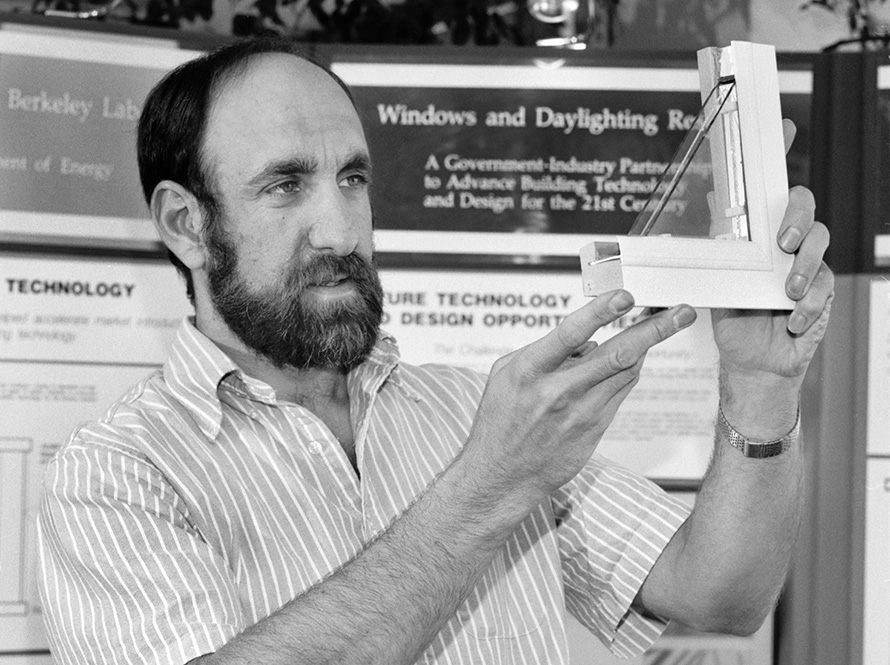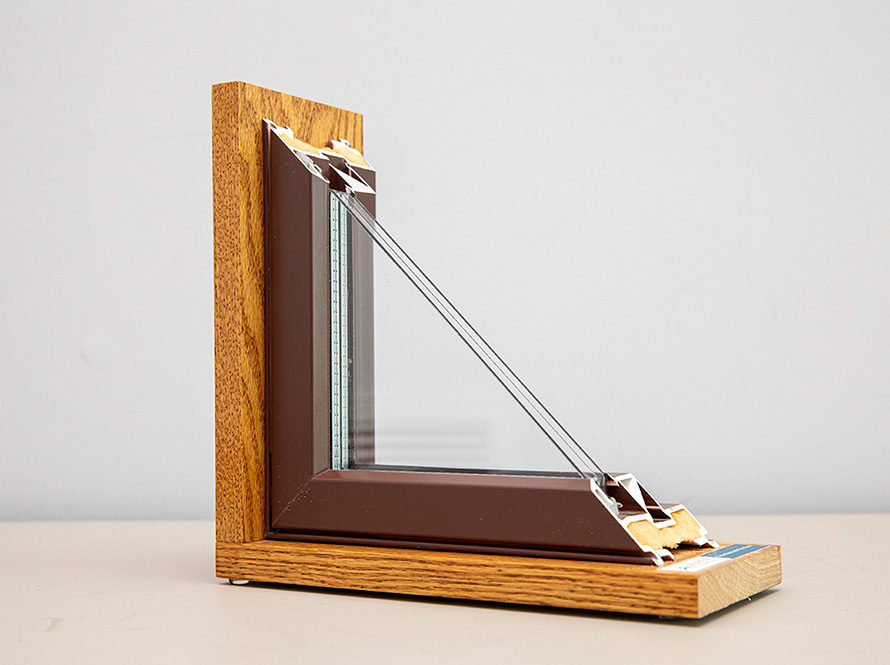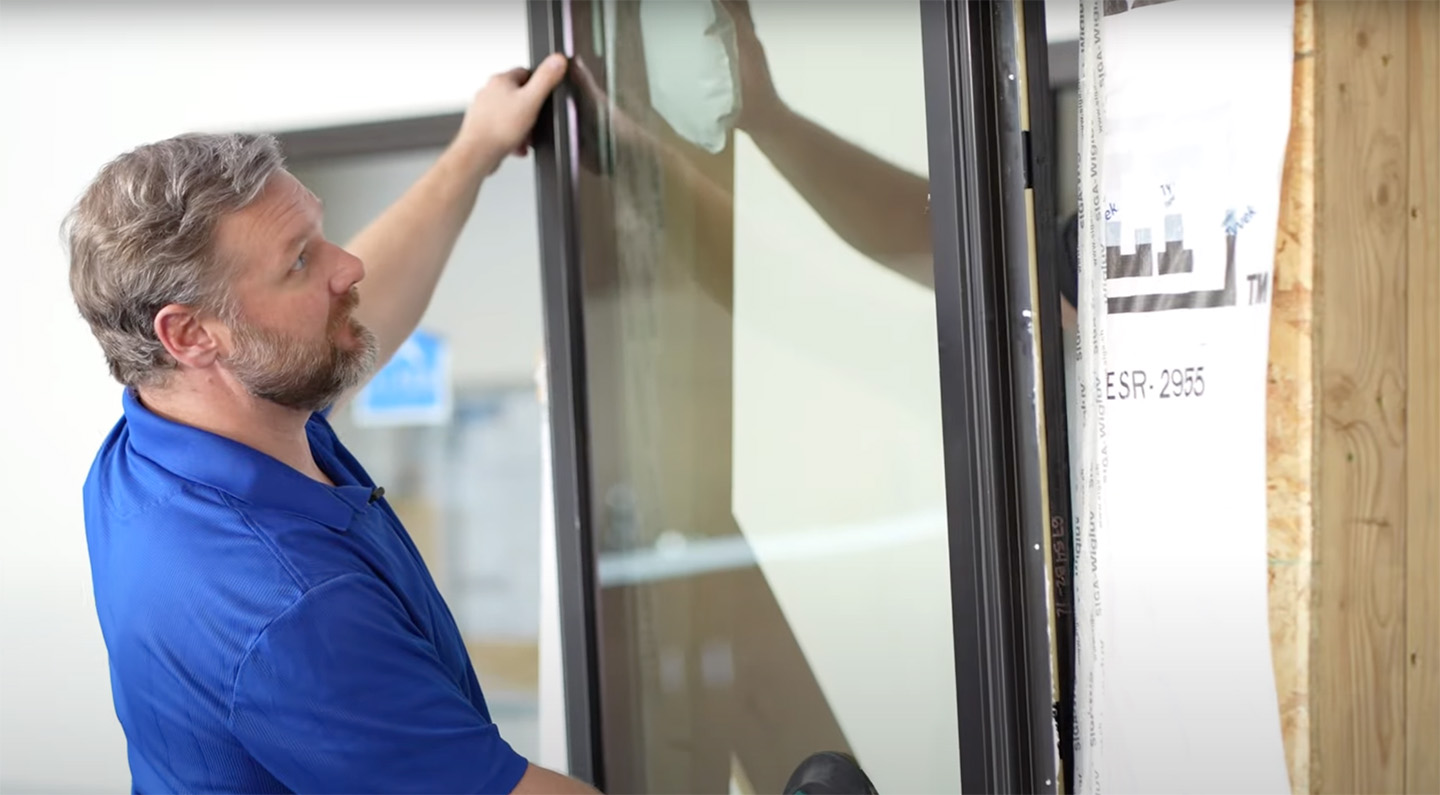Key Takeaways
- Technology developed by Berkeley Lab paved the way for making highly insulating and lightweight triple-pane windows.
- With help from Berkeley Lab, the Department of Energy's Building Technologies Office, and the private sector, U.S. window companies are opening new manufacturing plants in America to make thin triple-pane windows.
- Scaling up production of these windows will create opportunities: New options for affordable, energy-saving products, new jobs, and more reliable access to the materials that U.S. builders need.
A new kind of thin-glass triple-pane window could save U.S. businesses and homeowners billions of dollars annually in energy costs, as well as enable U.S. manufacturing, shorter wait times for builders, and more choices for consumers.
Two U.S. window makers are paving the way for this burgeoning market. Since 2021, Renewal by Andersen, based in Minnesota, has been mass-manufacturing windows with thin-triple glass using technology developed by the Department of Energy's Lawrence Berkeley National Laboratory (Berkeley Lab). Renewal has just opened an additional production facility in Georgia for products with a thin-triple option. Also using the Berkeley Lab innovation, Alpen High Performance Products, based in Colorado, has begun mass-manufacturing thin-triple windows at its factory in Louisville, Colorado. Alpen will open another production facility in Pennsylvania soon.
Conventional triple-pane windows have existed on the market since the early 1980s, but they have not been widely adopted. They required wider, heavier, and more costly frames than single- or double-pane windows due in part to the extra weight of the third pane of glass.
In the late 1980s, Berkeley Lab researchers devised a solution - a highly insulating, thin-triple-pane window that showed promise to cut even more in annual building energy costs for heating and air conditioning than the state-of-the-art technology at the time.
"The potential energy benefits of thin glass triple-pane windows were clear from the beginning," said Stephen Selkowitz, a former Berkeley Lab researcher who led the early development of the thin-triple glass technology.


In addition to energy savings, the Berkeley Lab technology offers a more cost-effective window upgrade than other triple-pane windows because it can easily replace double-pane windows without having to modify the window frame.
But the technology was initially put on hold because there were no viable sources of large sheets of very thin glass, and the initial cost of the thin glass made it prohibitively expensive.
Clearing the way for thin-triple market adoption
Fast forward to the late 2000s, when glass manufacturers raced to supply smartphone and flat panel TV manufacturers with lighter, thinner glass to keep up with consumer demand. The price of thin glass dropped, signaling an opportune time to prepare thin-triple windows for market adoption.
With new glass supply options in 2018, the Berkeley Lab team restarted its thin glass window development. Several U.S. window companies worked with the Berkeley Lab R&D team to build and test prototypes suitable for large-scale manufacturing. These companies included Renewal by Andersen, Andersen Corporation's full service window- and door-replacement company; Alpen High Performance Products, which specializes in energy-efficient doors and windows; and PGT, a major manufacturer and supplier of hurricane-resistant windows.
"Our early window technology was ahead of its time," said Robert Hart, a researcher who leads the high-performance window team in Berkeley Lab's Energy Technologies Area. "It's exciting to see that work inspiring new high-performance windows that will soon be available across the country."

Specialty window products that are custom manufactured often cost more than mainstream products. Thus, a key goal for many companies is to scale up production to reduce costs. "Manufacturing at higher volume on automated production lines could help drive down costs of thin-triple windows even further and transform the market for low-cost, energy-efficient windows," Hart said.
A collaboration with Corning Inc., a global materials science company known for its expertise in glass science and manufacturing, helped Alpen ramp up production of its thin-triple and quad-pane offerings.
The Berkeley Lab researchers are currently collaborating with industry experts to address market adoption barriers to thin-triple windows. In recent work with Michigan Technological University, Hart and team helped develop industry guidance for window performance testing and safe handling. In a separate project, the researchers are supporting the development of vacuum-insulated glazing to further minimize heat transfer between windows and their surrounding environment.
"It's pretty exciting that a window technology born out of an idea from 40 years ago is now creating jobs in the U.S.," said Luis Fernandes, head of the Building Technologies Department in Berkeley Lab's Energy Technologies Area. "One of the roles of Berkeley Lab is to have an idea and shepherd it through the challenges of R&D until it's ready to manufacture at high volume."
"The lack of availability of these innovative new windows has long been a bottleneck for homebuilders. But now, DOE's industry-led R&D is helping to create a more reliable supply chain for a crucial component of building projects," said Hart.
Berkeley Lab's work on thin-triple window technology was supported by the Department of Energy's Office of Energy Efficiency & Renewable Energy, Building Technologies Office, and the California Energy Commission.






